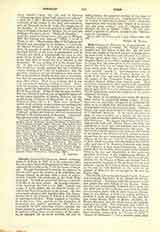

Coriolis, GASPARD-GUSTAVE DE, French mathematician, b. at Paris, in 1792; d. in the same city, 1843. He entered the Ecole Polytechnique in 1808, and later continued his studies at the Ecole des Ponts et Chaussees. Though determined to become an engineer, he did not enter upon the practice of his profession, but became instead, in the year 1816, a tutor in mathematical analysis and mechanics at the Ecole Poly-technique. In 1838 he succeeded Dulong as director of studies in the same school. He became a member of the Academie des Sciences in 1836. Coriolis was a man of much ability, but his delicate health prevented him from doing justice to his powers. He was a successful educator and together with Gen. Ponce-let was one of the pioneers of reform in the methods of teaching mechanics. While engaged in teaching, he at the same time carried on his researches in theoretical and applied mechanics. The theorem enunciated by him regarding relative motions has found numerous applications, particularly in the case of motions taking place on the surface of the earth: as, for example, the deviation towards the east of falling bodies, the apparent rotation of the plane of vibration of a pendulum, etc. Coriolis was the author of “Calcul de l’effet des machines” (1829), which was reprinted in 1844 with the title “Traite de la mecanique des corps solides”, and of “Theorie mathematique du jeu de billard” (1835). He also published a number of articles, notably in the “Dictionnaire de l’industrie”.
HENRY M. BROCK

